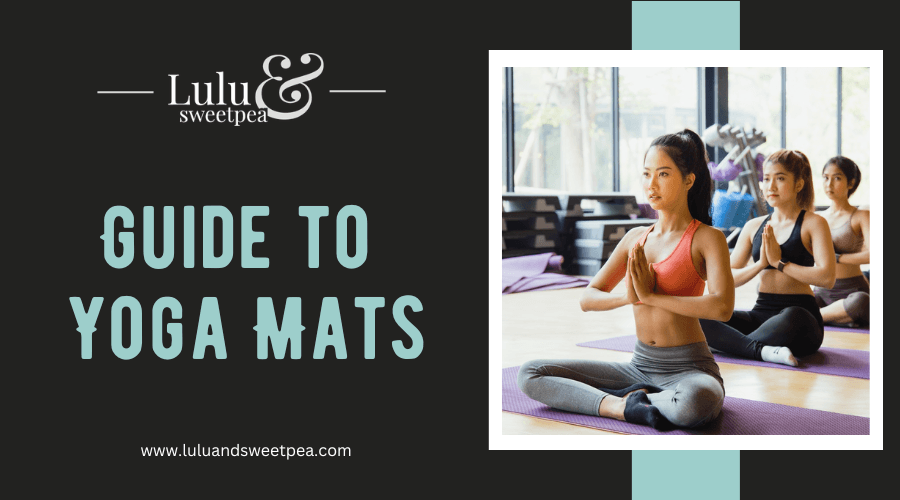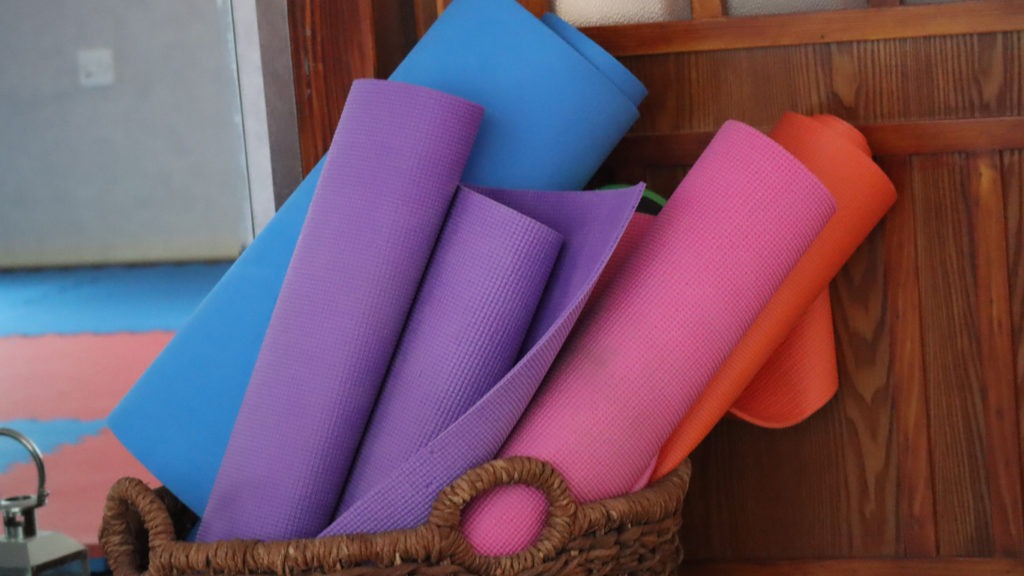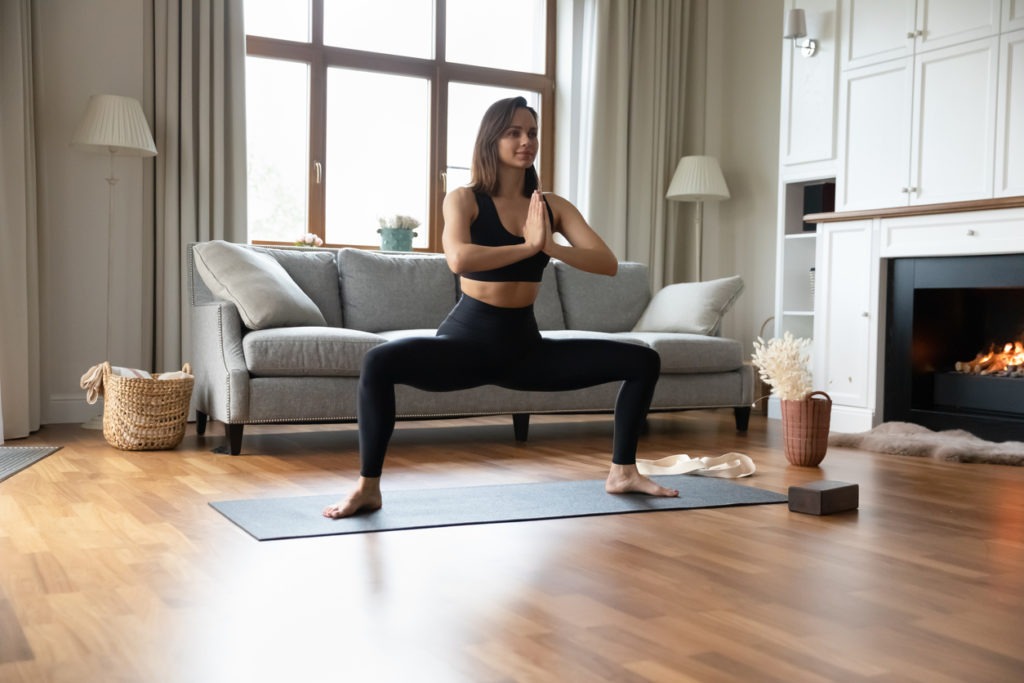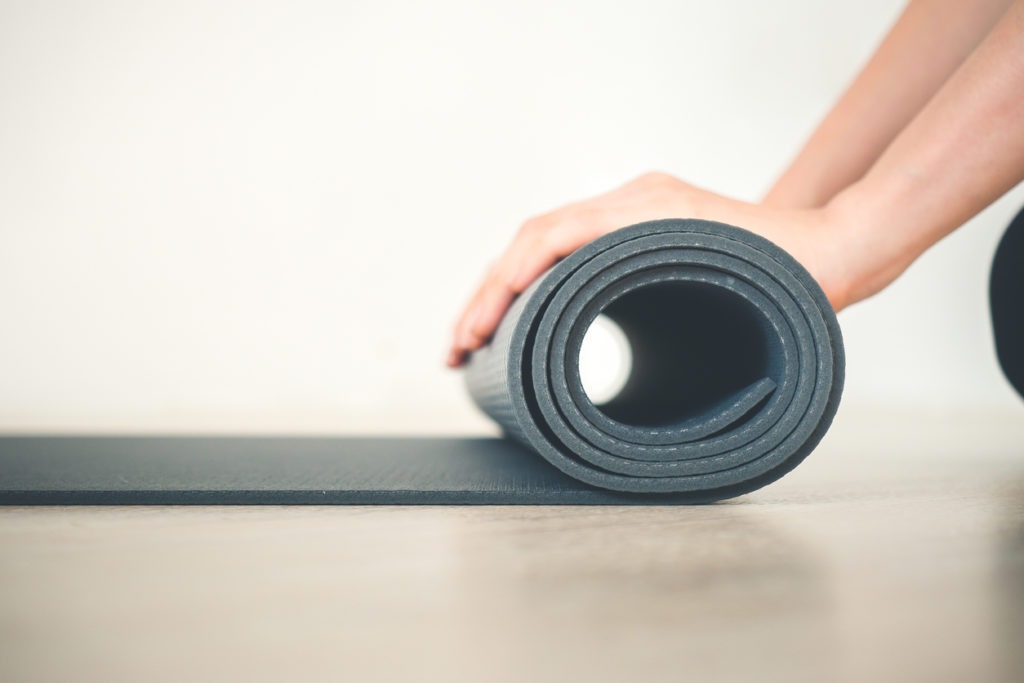A yoga mat is an essential piece of equipment when you practice yoga at home or attend yoga classes in a studio or gym. It also comes in handy for other floor workouts, including stretching, abdominal exercises, functional fitness training, and high-intensity interval training (HIIT) sessions.
Yoga mats have come a long way since the original mat was made from carpet underlay. Back then, your only choice was PVC, and you needed to choose between purple or blue. Nowadays, a yoga mat can suit every preference or fitness needs.
If you started practicing yoga and are looking to invest in your first yoga mat, this article will provide you with all the information that would help.
What is a Yoga Mat?
A yoga mat provides extra support and grip for any workout involving floor exercises, such as stretching, weight lifting, ab routines, Pilates, HIIT, and of course, yoga. It offers a cushioned, non-slip surface that makes it easier to perform exercises safely and comfortably.
Having your own yoga mat to bring to a gym or studio is more hygienic, and you can choose a mat that suits your specific needs in terms of comfort, body type, and weight. It’s also nice to own a mat in the color and design you like.
Factors to Consider when Choosing a Yoga Mat
With so many kinds of yoga mats on the market, consisting of different lengths, materials, widths, and thicknesses, choosing a mat can be a surprisingly challenging decision. To make sure you buy the right mat for you, here’s what you need to consider:
1. Intended use
If you plan to buy a yoga mat to keep at home, choose one that’s thicker and more durable, especially if you plan to do supine or seated poses. If you have a dedicated yoga area in your home, the weight won’t be a factor, so as much as possible, buy something sturdy to make sure it will last for a long time.
If you plan to buy a yoga mat to bring on studios and trips, choose something lightweight to make it easy to bring anywhere. If you want to do hot yoga, do lots of standing poses, or if you live in a hot and humid climate, a yoga mat with a non-slip surface that offers lots of grips would be the most suitable.
Also, consider the room where you’ll practice in, and if the floor is carpeted, tiled, or wooden. Tiled and hardwood surfaces can be more unforgiving to the body, so make sure the yoga mat you pick is thick and dense enough to provide support and padding for your knees and wrists. But if you’re practicing on top of a carpet, choose a thinner and stiffer mat since too much padding will make it harder to balance, and a thick mat will bunch up on a carpeted floor.
2. Type of Workout
Another important consideration to remember is the type of yoga you will be doing on it. Your preference will likely differ if you’re doing power or hot yoga compared to gentle yoga-like Kundalini.
You may also consider whether or not you’ll be spending a long time in seated poses or engaging in relaxation poses on your yoga mat. If you think you will be doing more static holds and poses, a thicker-than-average, more cushioned yoga mat will offer more comfort when you’re using it for prolonged periods.
3. Size
The size of the yoga mat is all about what works best for your body and the type of yoga or workout you do. Most yoga mats are around 25 inches wide and 70 inches long, while some brands offer multiple length and width options. If you’re on the tall side, you may want a 72 or 74-inch long mat. You can also look for extra-wide mats if you prefer more space or if you have broad shoulders, you may want to buy extra-wide mats.
4. Material
The material your yoga mat is made of will determine its stickiness, sponginess, texture, and how it wears over time. Here are the most popular materials used for making yoga mats:
- Rubber
These mats are popular as they provide the ideal density – not too soft but not too hard. It’s denser, so rubber mats of the same thickness can give more cushioning and is more comfortable against hard floors. It’s also more durable and can provide enough grip and ground connection.
Rubber is also more firm than most materials, which means it can be stable, making it great for balancing and standing poses. If you’re going to engage in hot yoga, where there would be considerable sweating, rubber is an excellent choice because it’s water-resistant.
- PVC
PVC is the best material to use if you want the firmness and stickiness of rubber but is allergic to latex. This material is also light and easy to carry around. Like rubber, it can provide excellent grip and offers instant curves around the feet or hands when you place pressure on the mat. These mats are good for gripping but might be harder to clean.
Generally, PVC is also affordable and easy to roll up, store away, and carry. This is an essential feature if you plan to transport your yoga mat. However, it’s not the most eco-friendly material out there.
- Thermal plastic elastomer (TPE)
Also called thermoplastic rubber, this material offers elasticity, cushioning, durability, and reusability. It’s a more-ecofriendly option than PVC. It’s soft, non-toxic, and reliable, making it suitable for both travel and home use.
5. Thickness
The thickness of a yoga mat will have a lot to do with how comfortable it is. If you pick something too thin, your knee may get banged up during a lunge, while getting a mat too thick can make it harder for you to connect to the floor.
Consider how much room you have to stow your yoga mat, how important portability is for you, and where your sweet spot is when it comes to comfort and being able to feel a connection to the floor. These are the different thicknesses in which yoga mats are available:
- 1/8” or 3 mm yoga mats
A standard yoga mat is 1/8” thick, so with this thickness, you have lots of options in the market. These mats provide plenty of support and durability, give you better balance and groundedness, and are easy to take to the gym or studio. It can fit in just about every yoga mat bag on the market.
If you like the feeling of just having a little padding, are short on storage, or have a long haul to the studio, a standard-depth mat is suitable. It’s great for both beginners, for all types of yoga, and for anyone who doesn’t have sensitive joints.
- ¼” or 6 mm yoga mats
If you’re looking for a mat that’s thick enough to provide cushioning for your joints but is still super comfortable to practice on, this is the yoga mat for you. These thicker, comfy mats are best for aching joints, dynamic yoga practices like Vinyasa and Ashtanga, and grounding practices like Yin yoga.
However, these mats can be heavy. If you don’t mind carrying a little more weight and storing a little more heft for the sake of more cushioning, then this thickness is best for you.
- 1/16” or 1.5 mm yoga mats
Yoga mats can be as thin as 1/16”, and it’s designed with travelers in mind. These wafer-thin yoga mats often called travel yoga mats, are easy to fold and don’t weigh much, making them easy to fit inside a suitcase. It’s best for those who travel extra light.
However, their advantage is also their disadvantage. Because it’s made of thin material, a travel yoga mat will make your practice slightly uncomfortable, and joints will not be protected. But it will offer enough comfort when placed on top of a carpeted floor.
- ½” or 12 mm yoga mats
The thickest mats are best for you if you need extra protection for your joints during yoga. It offers the most cushioning, making a lot of poses a lot more comfortable. If you have sensitive joints, these types of mats will allow you to put less pressure on your joints during class.
The disadvantage of using extra-thick yoga mats is that they can limit how dynamic your yoga practice can be. If you need to practice a dynamic form of yoga like Ashtanga or Vinyasa flow, or balance for standing poses like Tree or Warrior pose, an extra thick yoga mat may not be ideal for you. Think of it as practicing on a soft surface – it would surely make some poses harder to do. However, extra-thick yoga mats may be fine if you plan to practice grounding practices like Restorative yoga or Yin yoga.
6. Texture and Stickiness
Texture matters with yoga mats because it dictates how much traction it provides. It affects how much sliding and slipping you might do while doing yoga. It also provides physical barriers to sliding, affecting how a mat feels. Overall, it will affect your comfort level while using a yoga mat.
If you need a mat that prevents slipping, avoid PVC mats and look for rubber or TPE with a raised, tactile pattern. The grip the raised texture can provide will help you stay in your position no matter how challenging, vigorous, or sweaty your exercise gets.
Meanwhile, stickiness is also vital because it will help you maintain alignment and keep you from sliding all over the place while moving from one pose to another or when holding poses for several seconds. PVC is a very sticky material that will help you stay put in your poses. However, a natural rubber mat can offer you the same strong traction while being sturdier.
Some mats use different textures to provide grip to support your yoga practices. Your need for texture and stickiness will ultimately depend on the style of yoga you plan to practice.



